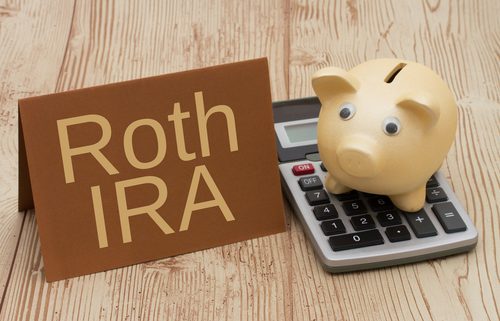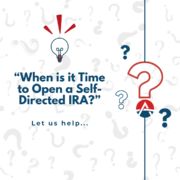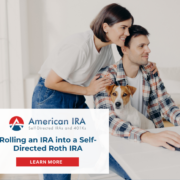Is the Self-Directed Roth IRA a Tax-Free Solution for Retirement?
When people think about retirement accounts, they like to hear the phrase “tax-free.” And there are indeed plenty of ways investors can utilize tax-free benefits. For example, the growth within a Traditional IRA is tax-free before the investor takes the money out of the account. And one of the most popular things you might hear is that a Roth IRA means tax-free deductions when you have passed retirement age. But as we all know, nothing in life is free. So how does a Self-Directed Roth IRA really create these benefits for its owners? Here is what you will need to know.
What “Tax-Free” Means in the Context of a Self-Directed Roth IRA
First, let us explore the basics of the Roth IRA. This is an IRA in which there are no tax-deductible contributions. That means that you are using only after-tax money—money you have earned from a job, for example—to put towards this account, with an upper limit of $6,000, depending on the year and your individual circumstances.
When invested within a Roth IRA, yes, the money grows tax-free. And when you start taking withdrawals from this account after retirement age, that money is tax-free, too. Now you see why so many people enjoy the Roth IRA. But keep in mind that this means that the tax advantages and incentives come on the back end with a Roth IRA. If you believe that your income in retirement will be higher than it is now, a Roth IRA is especially advantageous.
However, let us be clear about what tax-free means in this context. To use a Self-Directed IRA, or even to qualify for one, an investor typically has to establish some form of income. That means that investors will be using after-tax income to contribute to a Self-Directed IRA. This is why it’s not truly tax-free: you’re still using income that has been taxed. But for many retirement investors, this is one of the key benefits of the Roth IRA: the ability to eschew taxes on the back end in favor of paying them upfront.
How a Self-Directed Roth IRA Works
The fact that money grows tax-free within a Roth IRA—and remains tax-free when withdrawals are made in retirement—is powerful for investors who put their money away. For starters, consider that you do not even have to take distributions at retirement age if you do not want to—you can simply let the money continue to grow tax-free. Why does the IRS let you do this? Because the money has already had a taxable event on it, as you contribute after-tax dollars into the Roth IRA. Since no more taxes will be collected on this money, there is really no reason it cannot stay in an account and continue to grow.
Because the money is taxed upfront, it also gives you flexibility during the life of the Self-Directed Roth IRA. If you need to withdraw money from the account, a qualified withdrawal is tax and penalty-free. However, keep in mind that this may not apply to your situation.
Why self-directing? With a Self-Directed Roth IRA, an individual investor can use a Roth IRA for a wide range of potential investments, including precious metals, real estate, tax liens, and more. In combination with what the Roth IRA can do for investors, this ability to diversify or make one’s own retirement investment decisions can appeal to many people.
Interested in learning more about Self-Directed IRAs? Contact American IRA, LLC at 866-7500-IRA (472) for a free consultation. Download our free guides or visit us online at www.AmericanIRA.com.










